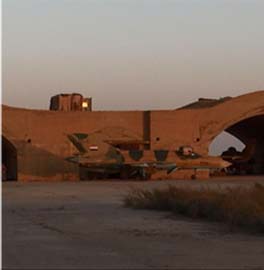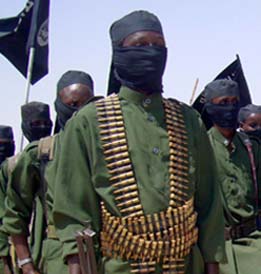
The transitional Syrian government and the US-backed Syrian Democratic Forces (SDF) have reached an agreement regarding the handover of the strategic Tishrin Dam from SDF’s control to Damascus’s control. Local Kurdish media and Damascus state media reported the deal, which follows four months of clashes over the dam that pitted Turkish-backed Syrian National Army (SNA) factions against the SDF. The dam is located on the Euphrates River and is a key strategic and infrastructure site in central Syria. It also links areas controlled by the SDF with the SNA and Syria’s new government forces.
On April 14, according to the state-controlled Syrian Arab News Agency (SANA), “a delegation from the [Syrian] Ministry of Defense, headed by Brigadier General Awwad Mohammad, Commander of the 60th Division, paid a field tour to the Tishreen Dam axis in Aleppo Eastern countryside to inspect the security and military situation in the area.” Mohammad told SANA that “the Tishreen Dam will be handed over within a carefully considered timetable, which will be announced in the coming days, within the framework of full coordination between the relevant authorities.”
Kurdistan24, a Kurdish media channel located in Erbil, Iraq, reported on April 10 that “the Democratic Autonomous Administration of North and East Syria (DAANES) and the Syrian government have reached a significant agreement to jointly manage the Tishreen Dam, one of the largest hydropower facilities in northern Syria (Rojava).” The report added that a source from DAANES, the civilian authority in eastern Syria, “confirmed on Thursday that the agreement is part of a broader political understanding between the Syrian Democratic Forces (SDF) and the transitional Syrian government. Under the terms of the deal, the SDF will withdraw from the dam area, transferring control to the general security forces operating under the authority of the new Damascus administration.”
The Kurdistan24 report characterized the deal as one result of the March 10 Damascus meeting between SDF leader Mazloum Abdi and Syrian interim President Ahmed al Sharaa. The agreement took some time to iron out. Recent clashes over the dam, largely the result of a power vacuum in Syria after the fall of the Bashar al Assad regime, had peaked in January as various forces vied to take areas where the regime had suddenly evaporated. For instance, on January 7, The New Arab reported that 280 people had been killed in battles between the Turkish-backed SNA and the US-backed SDF near the dam.
Abdi said in an interview with Al Monitor that the clashes had ended around April 1 as the March 10 agreement began to pave the way for an agreement. “There are two parts to the Tishreen accord. The first concerns the dam itself. We have agreed with Damascus for the administration and personnel of the dam to be preserved as is. The dam’s operational center is on the dam itself.” Abdi added, “Our sides are going to withdraw to our side, to the east, and hand over our positions to Damascus forces. We are currently positioned eight kilometers away from the dam.”
Reports portray the deal over the dam as a key to de-escalating tensions between the various factions, including the SDF and SNA. The agreement is complex because it involves not only the SDF and the new Syrian army but also the SNA.
According to local Syrian reports, the deal is also backed by the US-led coalition, though the coalition has not commented on its role. Members of the coalition visited the dam on April 12, the same day that reports first emerged about a potential agreement over the area, according to several reports from the site. The pro-Iranian Al Mayadeen TV channel noted that “North Syria’s Tishreen Dam hosted a notable visit from a delegation of the US-led international coalition, accompanied by representatives from the Syrian government and the Kurdish-led Syrian Democratic Forces (SDF), as intense helicopter activity from the international coalition covered the skies over the area.”
On April 14, Syrian state media noted that the visit by its delegation from the Syrian Ministry of Defense included a tour of the area as the central government attempts to “restore security and stability and strengthen control in these areas.”







